
Calculus Volume 2
2nd Edition
ISBN: 9781630182021
Author: Gilbert Strang, Edwin Jed Herman
Publisher: OpenStax College.
expand_more
expand_more
format_list_bulleted
Concept explainers
Textbook Question
Chapter 4.2, Problem 87E
Match the direction field with the given differential equations. Explain your selections.
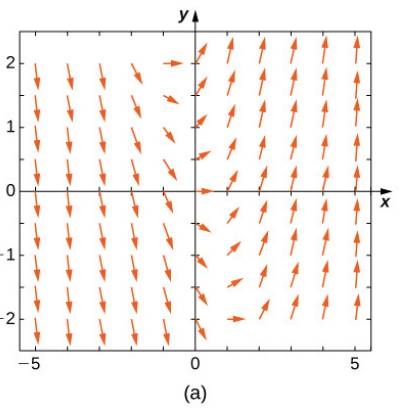
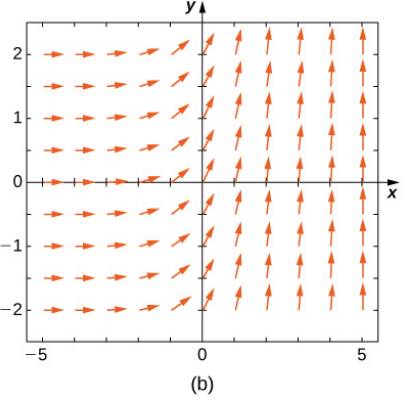
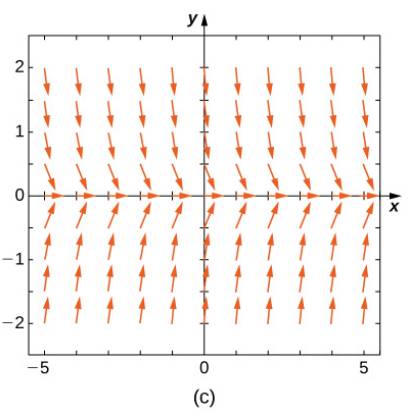
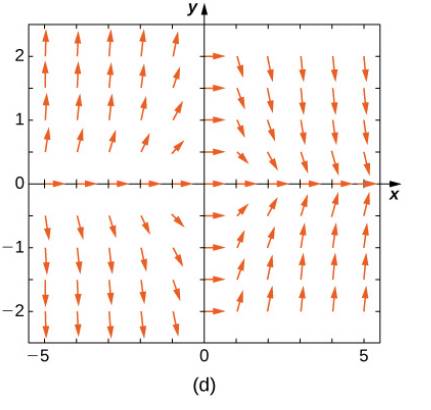
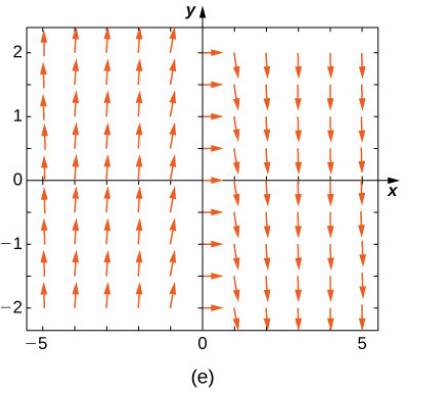
87.
Expert Solution & Answer
Want to see the full answer?
Check out a sample textbook solution
Students have asked these similar questions
Using FDF, BDF, and CDF, find the first derivative;
1. The distance x of a runner from a fixed point is measured (in meters) at an
interval of half a second. The data obtained is:
t
0
x
0
0.5
3.65
1.0
1.5
2.0
6.80
9.90
12.15
Use CDF to approximate the runner's velocity at times t = 0.5s and t = 1.5s
2. Using FDF, BDF, and CDF, find the first derivative of f(x)=x Inx for an input
of 2 assuming a step size of 1. Calculate using Analytical Solution and
Absolute Relative Error:
=
True Value - Approximate Value|
x100
True Value
3. Given the data below where f(x)
sin (3x), estimate f(1.5) using Langrage
Interpolation.
x
1
1.3
1.6
1.9
2.2
f(x)
0.14
-0.69
-0.99
-0.55
0.31
4. The vertical distance covered by a rocket from t=8 to t=30 seconds is given
by:
30
x =
Loo (2000ln
140000
140000
-
2100
9.8t) dt
Using the Trapezoidal Rule, n=2, find the distance covered.
5. Use Simpson's 1/3 and 3/8 Rule to approximate for sin x dx. Compare the
results for n=4 and n=8
Can you check if my step is correct?
I need help explaining on this example on how can I define the Time-Domain Function, Apply the Laplace Transformation Formula, and Simplify to Find the Frequency-Domain Expression. I need to understand on finding Y(s)
Chapter 4 Solutions
Calculus Volume 2
Ch. 4.1 - Determine the order of the following differential...Ch. 4.1 - Determine the order of the following differential...Ch. 4.1 - Determine the order of the following differential...Ch. 4.1 - Determine the order of the following differential...Ch. 4.1 - Determine the order of the following differential...Ch. 4.1 - Determine the order of the following differential...Ch. 4.1 - Determine the order of the following differential...Ch. 4.1 - Verify that the following functions are solutions...Ch. 4.1 - Verify that the following functions are solutions...Ch. 4.1 - Verify that the following functions are solutions...
Ch. 4.1 - Verify that the following functions are solutions...Ch. 4.1 - Verify that the following functions are solutions...Ch. 4.1 - Verify that the following functions are solutions...Ch. 4.1 - Verify that the following functions are solutions...Ch. 4.1 - Verify that the following functions are solutions...Ch. 4.1 - Verify that the following functions are solutions...Ch. 4.1 - Verify that the following functions are solutions...Ch. 4.1 - Verify the following general solutions and find...Ch. 4.1 - Verify the following general solutions and find...Ch. 4.1 - Verify the following general solutions and find...Ch. 4.1 - Verify the following general solutions and find...Ch. 4.1 - Verify the following general solutions and find...Ch. 4.1 - Verify the following general solutions and find...Ch. 4.1 - Verify the following general solutions and find...Ch. 4.1 - Verify the following general solutions and find...Ch. 4.1 - Verify the following general solutions and find...Ch. 4.1 - Verify the following general solutions and find...Ch. 4.1 - For the following problems, find the general...Ch. 4.1 - For the following problems, find the general...Ch. 4.1 - For the following problems, find the general...Ch. 4.1 - For the following problems, find the general...Ch. 4.1 - For the following problems, find the general...Ch. 4.1 - For the following problems, find the general...Ch. 4.1 - For the following problems, find the general...Ch. 4.1 - For the following problems, find the general...Ch. 4.1 - For the following problems, find the general...Ch. 4.1 - For the following problems, find the general...Ch. 4.1 - Solve the following initial-value problems...Ch. 4.1 - Solve the following initial-value problems...Ch. 4.1 - Solve the following initial-value problems...Ch. 4.1 - Solve the following initial-value problems...Ch. 4.1 - Solve the following initial-value problems...Ch. 4.1 - Solve the following initial-value problems...Ch. 4.1 - Solve the following initial-value problems...Ch. 4.1 - Solve the following initial-value problems...Ch. 4.1 - Solve the following initial-value problems...Ch. 4.1 - Solve the following initial-value problems...Ch. 4.1 - Recall that a family of solutions includes...Ch. 4.1 - Recall that a family of solutions includes...Ch. 4.1 - Recall that a family of solutions includes...Ch. 4.1 - Recall that a family of solutions includes...Ch. 4.1 - Recall that a family of solutions includes...Ch. 4.1 - Recall that a family of solutions includes...Ch. 4.1 - Recall that a family of solutions includes...Ch. 4.1 - Recall that a family of solutions includes...Ch. 4.1 - Recall that a family of solutions includes...Ch. 4.1 - Recall that a family of solutions includes...Ch. 4.1 - Recall that a family of solutions includes...Ch. 4.1 - Recall that a family of solutions includes...Ch. 4.1 - Recall that a family of solutions includes...Ch. 4.1 - Recall that a family of solutions includes...Ch. 4.1 - Recall that a family of solutions includes...Ch. 4.1 - Recall that a family of solutions includes...Ch. 4.1 - Recall that a family of solutions includes...Ch. 4.1 - Recall that a family of solutions includes...Ch. 4.2 - For the following problems, use the direction...Ch. 4.2 - For the following problems, use the direction...Ch. 4.2 - For the following problems, use the direction...Ch. 4.2 - For the following problems, use the direction...Ch. 4.2 - For the following problems, use the direction...Ch. 4.2 - For the following problems, use the direction...Ch. 4.2 - For the following problems, use the direction...Ch. 4.2 - For the following problems, use the direction...Ch. 4.2 - Draw the direction field for the following...Ch. 4.2 - Draw the direction field for the following...Ch. 4.2 - Draw the direction field for the following...Ch. 4.2 - Draw the direction field for the following...Ch. 4.2 - Draw the direction field for the following...Ch. 4.2 - Draw the directional field for the following...Ch. 4.2 - Draw the directional field for the following...Ch. 4.2 - Draw the directional field for the following...Ch. 4.2 - Draw the directional field for the following...Ch. 4.2 - Draw the directional field for the following...Ch. 4.2 - Match the direction field with the given...Ch. 4.2 - Match the direction field with the given...Ch. 4.2 - Match the direction field with the given...Ch. 4.2 - Match the direction field with the given...Ch. 4.2 - Match the direction field with the given...Ch. 4.2 - Match the direction field with the given...Ch. 4.2 - Match the direction field with the given...Ch. 4.2 - Match the direction field with the given...Ch. 4.2 - Match the direction field with the given...Ch. 4.2 - Match the direction field with the given...Ch. 4.2 - Estimate the following solutions using Euler’s...Ch. 4.2 - Estimate the following solutions using Euler’s...Ch. 4.2 - WEstimate the following solutions using Euler’s...Ch. 4.2 - Estimate the following solutions using Euler’s...Ch. 4.2 - Estimate the following solutions using Euler’s...Ch. 4.2 - Estimate the following solutions using Euler’s...Ch. 4.2 - Estimate the following solutions using Euler’s...Ch. 4.2 - Estimate the following solutions using Euler’s...Ch. 4.2 - Estimate the following solutions using Euler’s...Ch. 4.2 - Estimate the following solutions using Euler’s...Ch. 4.2 - Differential equations can be used to model...Ch. 4.2 - Differential equations can be used to model...Ch. 4.2 - Differential equations can be used to model...Ch. 4.2 - Differential equations can be used to model...Ch. 4.2 - Differential equations can be used to model...Ch. 4.2 - Differential equations can be used to model...Ch. 4.2 - Differential equations can be used to model...Ch. 4.2 - Differential equations can be used to model...Ch. 4.2 - Differential equations can be used to model...Ch. 4.2 - Differential equations can be used to model...Ch. 4.2 - Consider the initial-value problem y' = 2y, y(0) =...Ch. 4.2 - Consider the initial-value problem y' = 2y, y(0) =...Ch. 4.2 - Consider the initial-value problem y' = 2y, y(0) =...Ch. 4.2 - Consider the initial-value problem y' = 2y, y(0) =...Ch. 4.2 - Consider the initial-value problem y' = 2y, y(0) =...Ch. 4.3 - Solve the following initial-value problems with...Ch. 4.3 - Solve the following initial-value problems with...Ch. 4.3 - Solve the following initial-value problems with...Ch. 4.3 - Solve the following initial-value problems with...Ch. 4.3 - Find the general solution to the differential...Ch. 4.3 - Find the general solution to the differential...Ch. 4.3 - Find the general solution to the differential...Ch. 4.3 - Find the general solution to the differential...Ch. 4.3 - Find the general solution to the differential...Ch. 4.3 - Find the general solution to the differential...Ch. 4.3 - Find the general solution to the differential...Ch. 4.3 - Find the general solution to the differential...Ch. 4.3 - Find the general solution to the differential...Ch. 4.3 - Find the general solution to the differential...Ch. 4.3 - Find the solution to the initial-value problem....Ch. 4.3 - Find the solution to the initial-value problem....Ch. 4.3 - Find the solution to the initial-value problem....Ch. 4.3 - Find the solution to the initial-value problem....Ch. 4.3 - Find the solution to the initial-value problem....Ch. 4.3 - Find the solution to the initial-value problem....Ch. 4.3 - Find the solution to the initial-value problem....Ch. 4.3 - Find the solution to the initial-value problem....Ch. 4.3 - Find the solution to the initial-value problem....Ch. 4.3 - Find the solution to the initial-value problem....Ch. 4.3 - For the following problems, use a software program...Ch. 4.3 - For the following problems, use a software program...Ch. 4.3 - For the following problems, use a software program...Ch. 4.3 - For the following problems, use a software program...Ch. 4.3 - For the following problems, use a software program...Ch. 4.3 - Most drugs in the bloodstream decay according to...Ch. 4.3 - A drug is administered intravenously to a patient...Ch. 4.3 - [T] How often should a drug be taken if its dose...Ch. 4.3 - A tank contains 1 kilogram of salt dissolved in...Ch. 4.3 - A tank containing 10 kilograms of salt dissolved...Ch. 4.3 - [T] For the preceding problem, find flow much salt...Ch. 4.3 - Torricelli’s law states that for a water tank with...Ch. 4.3 - For the preceding problem, determine how long it...Ch. 4.3 - For the following problems, use Newton’s law of...Ch. 4.3 - For the following problems, use Newton’s law of...Ch. 4.3 - For the following problems, use Newton’s law of...Ch. 4.3 - For the following problems, use Newton’s law of...Ch. 4.3 - For the following problems, use Newton’s law of...Ch. 4.3 - For the following problems, use Newton’s law of...Ch. 4.3 - For the following problems, use Newton’s law of...Ch. 4.3 - For the following problems, use Newton’s law of...Ch. 4.3 - For the following problems, use Newton’s law of...Ch. 4.3 - For the following problems, use Newton’s law of...Ch. 4.3 - For the following problems, use Newton’s law of...Ch. 4.3 - For the following problems, use Newton’s law of...Ch. 4.4 - Student Project: Logistic Equation with a...Ch. 4.4 - Student Project: Logistic Equation with a...Ch. 4.4 - Student Project: Logistic Equation with a...Ch. 4.4 - Student Project: Logistic Equation with a...Ch. 4.4 - For the following problems, consider the logistic...Ch. 4.4 - For the following problems, consider the logistic...Ch. 4.4 - For the following problems, consider the logistic...Ch. 4.4 - For the following problems, consider the logistic...Ch. 4.4 - For the following problems, consider the logistic...Ch. 4.4 - A population of deer inside a park has a carrying...Ch. 4.4 - A population of frogs in a pond has a growth rate...Ch. 4.4 - [T] Bacteria grow at a rate of 2O per hour in a...Ch. 4.4 - [T] Rabbits in a park have an initial population...Ch. 4.4 - [T] Two monkeys are placed on an island. After 5...Ch. 4.4 - [T] A butterfly sanctuary is built that can hold...Ch. 4.4 - The following problems consider the logistic...Ch. 4.4 - The following problems consider the logistic...Ch. 4.4 - The following problems consider the logistic...Ch. 4.4 - The following problems consider the logistic...Ch. 4.4 - The following problems consider the logistic...Ch. 4.4 - It is more likely that the amount of fishing is...Ch. 4.4 - It is more likely that the amount of fishing is...Ch. 4.4 - It is more likely that the amount of fishing is...Ch. 4.4 - It is more likely that the amount of fishing is...Ch. 4.4 - It is more likely that the amount of fishing is...Ch. 4.4 - The following problems add in a minimal threshold...Ch. 4.4 - The following problems add in a minimal threshold...Ch. 4.4 - The following problems add in a minimal threshold...Ch. 4.4 - The following problems add in a minimal threshold...Ch. 4.4 - The following problems add in a minimal threshold...Ch. 4.4 - The following questions consider the Gompertz...Ch. 4.4 - The following questions consider the Gompertz...Ch. 4.4 - The following questions consider the Gompertz...Ch. 4.4 - The following questions consider the Gompertz...Ch. 4.4 - The following questions consider the Gompertz...Ch. 4.4 - The following questions consider the Gompertz...Ch. 4.4 - The following questions consider the Gompertz...Ch. 4.4 - The following questions consider the Gompertz...Ch. 4.4 - The following questions consider the Gompertz...Ch. 4.4 - Below is a table of the populations of whooping...Ch. 4.4 - Below is a table of the populations of whooping...Ch. 4.4 - Below is a table of the populations of whooping...Ch. 4.4 - Below is a table of the populations of whooping...Ch. 4.4 - Below is a table of the populations of whooping...Ch. 4.5 - Are the following differential equations linear?...Ch. 4.5 - Are the following differential equations linear?...Ch. 4.5 - Are the following differential equations linear?...Ch. 4.5 - Are the following differential equations linear?...Ch. 4.5 - Are the following differential equations linear?...Ch. 4.5 - Write the following first-order differential...Ch. 4.5 - Write the following first-order differential...Ch. 4.5 - Write the following first-order differential...Ch. 4.5 - Write the following first-order differential...Ch. 4.5 - Write the following first-order differential...Ch. 4.5 - What are the integrating factors for the following...Ch. 4.5 - What are the integrating factors for the following...Ch. 4.5 - What are the integrating factors for the following...Ch. 4.5 - What are the integrating factors for the following...Ch. 4.5 - What are the integrating factors for the following...Ch. 4.5 - Solve the following differential equations by...Ch. 4.5 - Solve the following differential equations by...Ch. 4.5 - Solve the following differential equations by...Ch. 4.5 - Solve the following differential equations by...Ch. 4.5 - Solve the following differential equations by...Ch. 4.5 - Solve the following differential equations by...Ch. 4.5 - Solve the following differential equations by...Ch. 4.5 - Solve the following differential equations by...Ch. 4.5 - Solve the following differential equations by...Ch. 4.5 - Solve the following differential equations by...Ch. 4.5 - Solve the following differential equations. Use...Ch. 4.5 - Solve the following differential equations. Use...Ch. 4.5 - Solve the following differential equations. Use...Ch. 4.5 - Solve the following differential equations. Use...Ch. 4.5 - Solve the following differential equations. Use...Ch. 4.5 - Solve the following differential equations. Use...Ch. 4.5 - Solve the following differential equations. Use...Ch. 4.5 - Solve the following differential equations. Use...Ch. 4.5 - Solve the following initial-value problems by...Ch. 4.5 - Solve the following initial-value problems by...Ch. 4.5 - Solve the following initial-value problems by...Ch. 4.5 - Solve the following initial-value problems by...Ch. 4.5 - Solve the following initial-value problems by...Ch. 4.5 - Solve the following initial-value problems by...Ch. 4.5 - Solve the following initial-value problems by...Ch. 4.5 - Solve the following initial-value problems by...Ch. 4.5 - Solve the following initial-value problems by...Ch. 4.5 - Solve the following initial-value problems by...Ch. 4.5 - A falling object of mass m can reach terminal...Ch. 4.5 - Using your expression from the preceding problem,...Ch. 4.5 - [T] Using your equation for terminal velocity,...Ch. 4.5 - A more accurate way to describe terminal velocity...Ch. 4.5 - Using your expression from the preceding problem,...Ch. 4.5 - [T] Using your equation for terminal velocity,...Ch. 4.5 - For the following problems, determine how...Ch. 4.5 - For the following problems, determine how...Ch. 4.5 - For the following problems, determine how...Ch. 4.5 - For the following problems, determine how...Ch. 4.5 - For the following problems, determine how...Ch. 4 - True or False? Justify your answer with a proof or...Ch. 4 - True or False? Justify your answer with a proof or...Ch. 4 - True or False? Justify your answer with a proof or...Ch. 4 - True or False? Justify your answer with a proof or...Ch. 4 - For the following problems, find the general...Ch. 4 - For the following problems, find the general...Ch. 4 - For the following problems, find the general...Ch. 4 - For the following problems, find the general...Ch. 4 - For the following problems, find the general...Ch. 4 - For the following problems, find the general...Ch. 4 - For the following problems, find the solution to...Ch. 4 - For the following problems, find the solution to...Ch. 4 - For the following problems, find the solution to...Ch. 4 - For the following problems, find the solution to...Ch. 4 - For the following problems, find the solution to...Ch. 4 - For the following problems, find the solution to...Ch. 4 - For the following problems, draw the directional...Ch. 4 - For the following problems, draw the directional...Ch. 4 - For the following problems, use Euler’s Method...Ch. 4 - For the following problems, use Euler’s Method...Ch. 4 - For the following problems, set up and solve the...Ch. 4 - For the following problems, set up and solve the...Ch. 4 - For the following problems, set up and solve the...Ch. 4 - For the following problems, set up and solve the...Ch. 4 - For the following problems, set up and solve the...Ch. 4 - For the following problems, set up and solve the...Ch. 4 - For the following problems, set up and solve the...Ch. 4 - For the following problems, set up and solve the...Ch. 4 - For the following problems, set up and solve the...
Additional Math Textbook Solutions
Find more solutions based on key concepts
NOTE: Write your answers using interval notation when appropriate.
CHECKING ANALYTIC SKILLS Fill in each blank ...
Graphical Approach To College Algebra
TRY IT YOURSELF 1
Find the mean of the points scored by the 51 winning teams listed on page 39.
Elementary Statistics: Picturing the World (7th Edition)
A pair of fair dice is rolled. What is the probability that the second die lands on a higher value than does th...
A First Course in Probability (10th Edition)
Identifying Discrete and Continuous Random Variables. In Exercises 5 and 6, refer to the given values, then ide...
Elementary Statistics (13th Edition)
Derivatives of Logarithms
In Exercises 11–40, find the derivative of y with respect to x, t, or θ, as appropria...
University Calculus: Early Transcendentals (4th Edition)
Knowledge Booster
Learn more about
Need a deep-dive on the concept behind this application? Look no further. Learn more about this topic, subject and related others by exploring similar questions and additional content below.Similar questions
- 1. A bicyclist is riding their bike along the Chicago Lakefront Trail. The velocity (in feet per second) of the bicyclist is recorded below. Use (a) Simpson's Rule, and (b) the Trapezoidal Rule to estimate the total distance the bicyclist traveled during the 8-second period. t 0 2 4 6 8 V 10 15 12 10 16 2. Find the midpoint rule approximation for (a) n = 4 +5 x²dx using n subintervals. 1° 2 (b) n = 8 36 32 28 36 32 28 24 24 20 20 16 16 12 8- 4 1 2 3 4 5 6 12 8 4 1 2 3 4 5 6arrow_forward1. A Blue Whale's resting heart rate has period that happens to be approximately equal to 2π. A typical ECG of a whale's heartbeat over one period may be approximated by the function, f(x) = 0.005x4 2 0.005x³-0.364x² + 1.27x on the interval [0, 27]. Find an nth-order Fourier approximation to the Blue Whale's heartbeat, where n ≥ 3 is different from that used in any other posts on this topic, to generate a periodic function that can be used to model its heartbeat, and graph your result. Be sure to include your chosen value of n in your Subject Heading.arrow_forwardI need help explaining on this example on how can I define the Time-Domain Function, Apply the Laplace Transformation Formula, andarrow_forward
- ma Classes Term. Spring 2025 Title Details Credit Hours CRN Schedule Type Grade Mode Level Date Status Message *MATHEMATICS FOR MANAGEME... MTH 245, 400 4 54835 Online Normal Grading Mode Ecampus Undergradu... 03/21/2025 Registered **Web Registered... *SOIL SCIENCE CSS 205, 400 0 52298 Online Normal Grading Mode Undergraduate 03/21/2025 Waitlisted Waitlist03/21/2025 PLANT PATHOLOGY BOT 451, 400 4 56960 Online Normal Grading Mode Undergraduate 03/21/2025 Registered **Web Registered... Records: 3 Schedule Schedule Detailsarrow_forwardHere is an augmented matrix for a system of equations (three equations and three variables). Let the variables used be x, y, and z: 1 2 4 6 0 1 -1 3 0 0 1 4 Note: that this matrix is already in row echelon form. Your goal is to use this row echelon form to revert back to the equations that this represents, and then to ultimately solve the system of equations by finding x, y and z. Input your answer as a coordinate point: (x,y,z) with no spaces.arrow_forward1 3 -4 In the following matrix perform the operation 2R1 + R2 → R2. -2 -1 6 After you have completed this, what numeric value is in the a22 position?arrow_forward
- 5 -2 0 1 6 12 Let A = 6 7 -1 and B = 1/2 3 -14 -2 0 4 4 4 0 Compute -3A+2B and call the resulting matrix R. If rij represent the individual entries in the matrix R, what numeric value is in 131? Input your answer as a numeric value only.arrow_forward1 -2 4 10 My goal is to put the matrix 5 -1 1 0 into row echelon form using Gaussian elimination. 3 -2 6 9 My next step is to manipulate this matrix using elementary row operations to get a 0 in the a21 position. Which of the following operations would be the appropriate elementary row operation to use to get a 0 in the a21 position? O (1/5)*R2 --> R2 ○ 2R1 + R2 --> R2 ○ 5R1+ R2 --> R2 O-5R1 + R2 --> R2arrow_forwardThe 2x2 linear system of equations -2x+4y = 8 and 4x-3y = 9 was put into the following -2 4 8 augmented matrix: 4 -3 9 This augmented matrix is then converted to row echelon form. Which of the following matrices is the appropriate row echelon form for the given augmented matrix? 0 Option 1: 1 11 -2 Option 2: 4 -3 9 Option 3: 10 ܂ -2 -4 5 25 1 -2 -4 Option 4: 0 1 5 1 -2 Option 5: 0 0 20 -4 5 ○ Option 1 is the appropriate row echelon form. ○ Option 2 is the appropriate row echelon form. ○ Option 3 is the appropriate row echelon form. ○ Option 4 is the appropriate row echelon form. ○ Option 5 is the appropriate row echelon form.arrow_forward
- Let matrix A have order (dimension) 2x4 and let matrix B have order (dimension) 4x4. What results when you compute A+B? The resulting matrix will have dimensions of 2x4. ○ The resulting matrix will be a single number (scalar). The resulting matrix will have dimensions of 4x4. A+B is undefined since matrix A and B do not have the same dimensions.arrow_forwardIf -1 "[a446]-[254] 4b = -1 , find the values of a and b. ○ There is no solution for a and b. ○ There are infinite solutions for a and b. O a=3, b=3 O a=1, b=2 O a=2, b=1 O a=2, b=2arrow_forwardA student puts a 3x3 system of linear equations is into an augmented matrix. The student then correctly puts the augmented matrix into row echelon form (REF), which yields the following resultant matrix: -2 3 -0.5 10 0 0 0 -2 0 1 -4 Which of the following conclusions is mathematically supported by the work shown about system of linear equations? The 3x3 system of linear equations has no solution. ○ The 3x3 system of linear equations has infinite solutions. The 3x3 system of linear equations has one unique solution.arrow_forward
arrow_back_ios
SEE MORE QUESTIONS
arrow_forward_ios
Recommended textbooks for you
 Discrete Mathematics and Its Applications ( 8th I...MathISBN:9781259676512Author:Kenneth H RosenPublisher:McGraw-Hill Education
Discrete Mathematics and Its Applications ( 8th I...MathISBN:9781259676512Author:Kenneth H RosenPublisher:McGraw-Hill Education Mathematics for Elementary Teachers with Activiti...MathISBN:9780134392790Author:Beckmann, SybillaPublisher:PEARSON
Mathematics for Elementary Teachers with Activiti...MathISBN:9780134392790Author:Beckmann, SybillaPublisher:PEARSON
 Thinking Mathematically (7th Edition)MathISBN:9780134683713Author:Robert F. BlitzerPublisher:PEARSON
Thinking Mathematically (7th Edition)MathISBN:9780134683713Author:Robert F. BlitzerPublisher:PEARSON Discrete Mathematics With ApplicationsMathISBN:9781337694193Author:EPP, Susanna S.Publisher:Cengage Learning,
Discrete Mathematics With ApplicationsMathISBN:9781337694193Author:EPP, Susanna S.Publisher:Cengage Learning, Pathways To Math Literacy (looseleaf)MathISBN:9781259985607Author:David Sobecki Professor, Brian A. MercerPublisher:McGraw-Hill Education
Pathways To Math Literacy (looseleaf)MathISBN:9781259985607Author:David Sobecki Professor, Brian A. MercerPublisher:McGraw-Hill Education

Discrete Mathematics and Its Applications ( 8th I...
Math
ISBN:9781259676512
Author:Kenneth H Rosen
Publisher:McGraw-Hill Education

Mathematics for Elementary Teachers with Activiti...
Math
ISBN:9780134392790
Author:Beckmann, Sybilla
Publisher:PEARSON


Thinking Mathematically (7th Edition)
Math
ISBN:9780134683713
Author:Robert F. Blitzer
Publisher:PEARSON

Discrete Mathematics With Applications
Math
ISBN:9781337694193
Author:EPP, Susanna S.
Publisher:Cengage Learning,

Pathways To Math Literacy (looseleaf)
Math
ISBN:9781259985607
Author:David Sobecki Professor, Brian A. Mercer
Publisher:McGraw-Hill Education
01 - What Is A Differential Equation in Calculus? Learn to Solve Ordinary Differential Equations.; Author: Math and Science;https://www.youtube.com/watch?v=K80YEHQpx9g;License: Standard YouTube License, CC-BY
Higher Order Differential Equation with constant coefficient (GATE) (Part 1) l GATE 2018; Author: GATE Lectures by Dishank;https://www.youtube.com/watch?v=ODxP7BbqAjA;License: Standard YouTube License, CC-BY
Solution of Differential Equations and Initial Value Problems; Author: Jefril Amboy;https://www.youtube.com/watch?v=Q68sk7XS-dc;License: Standard YouTube License, CC-BY